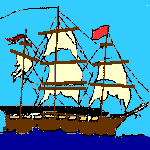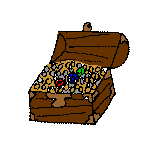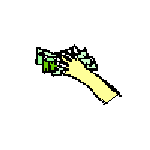|
History of
Palmyra Atoll
|
|

|
1802
Palmyra is discovered by an American captain
named Swale. His ship, The Palmyra,
drifted on to the shores of the atoll after a
storm. Swale is the first person to make
official reports for the atoll's existance and
establish its fixed location. Palmyra not only
has a reputation of amazing natural beauty, but
also one of mystery and intrigue. Over the years
haunting myths and stories have accumulated
about the atoll and those that have come into
contact with it.
|
|
1816
a Spanish Pirate boat, the Esperanza, shipwrecks
on the shores of Palmyra. The surviving crew
members alledgedly buried their booty of stolen
silver and gold from the Incan temples in Peru
under a palm grove on an islet named Home. They
then sail off in rafts that they build by hand.
Two of the rafts disappear, and only one is
rescued. The only survivor to tell of the
adventure becomes sick with pneumonia and dies
soon after.
|

|
|
|

|
1922
the Fullard-Leo family of Hawaii buys the atoll
from the owner, Judge Henry E. Cooper of
Honolulu.
|
|
1940-1947
The U.S. Navy occupy the atoll during this
period of time without consent from the Fullard
Leo-family and developed it into a naval air
facility. Over 6,000 military personnel are
stationed on the atoll from 1940-1947. During
their stay on the atoll, the United States
military dredge a channel, build a harbor,
construct a landing strip, create new islands
and then leave potentially dangerous debris when
they depart in 1947.
|

|
|
|

|
1974
A yachting couple is murdered by a fugitive drug
dealer who is hiding on the atoll. The murderer
most likely kills for the food and the couple's
sailboat. Six years later the skeletal remains
of the couple are found on the shores of
Palmyra. This double homocide is made into a New
York Bestseller named And the Sea Will
Tell, and then into a TV movie.
|
|
2000
Palmyra is bought by The Nature Conservancy for
30 million dollars. The Fullard-Leo's sell
Palmyra Atoll to The Nature Conservancy because
they believe that the atoll should not be
commercially developed and that it is worth the
effort to attempt to conserve Palmyra's unique
ecosystem.
|

|
|
|
|
|
|